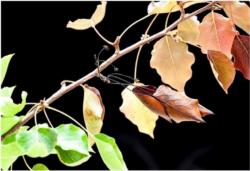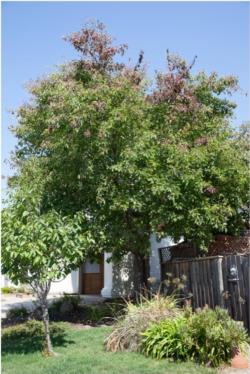The Plant Doctor
Fireblight Disease on Pears
Steve Tjosvold
Environmental Horticulture Farm Advisor
UC Cooperative Extension, Santa Cruz County

These current symptoms are a result of infections during the spring. Diseased wood oozes with the bacterium and spreads to open flowers in splashing rain or by insects that visit the flowers. Even honey bees can move the bacterium from flower to flower. The open flowers and young fruit are susceptible to infection and they along with associated infected stems shrivel, droop, and turn black, as though they were burned in a fire.

These infected branches can be best pruned out now when they are clearly visible. In the winter they will not be as obvious, and next year, in early spring, the infected wood will begin to ooze more bacteria again and the disease cycle will continue.
For more information see http://www.ipm.ucdavis.edu/PMG/PESTNOTES/pn7414.html
